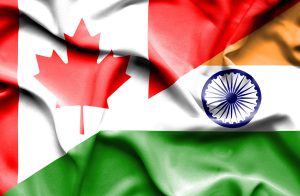On March 16, Canadian Security Intelligence Service (CSIS) chief Daniel Rogers was in New Delhi to attend a meeting of intelligence chiefs chaired by India’s National Security Adviser Ajit Doval. The meeting came amidst speculations that New Delhi is planning to restore its High Commissioner to Canada, with Dinesh Patnaik, currently India’s ambassador to Spain, reportedly being considered for this position.
These developments come as Canada’s new Prime Minister Mark Carney expressed interest in rebuilding ties with India — part of Ottawa’s bid to diversify its trade relationships with “like-minded countries.” Meanwhile, the Indian Ministry of External Affairs has also expressed interest in rebuilding ties with Canada based on “mutual trust and sensitivity.”
Both rhetoric and action are pointing toward a potential rapprochement.
Canada-India bilateral ties have been on a downward spiral since 2018, beginning with the controversy surrounding the presence of Jaspal Atwal — an Indian-origin businessman with alleged ties to the Khalistan movement, who was once on the Indian Ministry of Home Affairs’ black list — at an event organized by the Canadian High Commissioner during then-Prime Minister Justin Trudeau’s India visit.
The Khalistan issue resurfaced in 2023, when Sikh separatist Hardeep Singh Nijjar was shot dead outside a temple in Vancouver, resulting in Canada suspending trade negotiations and recalling its diplomats from India. In a significant diplomatic escalation, in October 2024, Canada even expelled six Indian diplomats, including the high commissioner, following accusations that they were involved in Nijjar’s killing. India strongly rejected these allegations, and responded by expelling six Canadian diplomats, including the country’s acting high commissioner.
While both sides reportedly resumed communications through diplomatic and security channels in December 2024, Rogers’ visit is the first publicly acknowledged meeting of Canadian and Indian security officials since the rupture. The meeting comes as both sides are struggling to navigate the global trade turmoil unleashed by U.S. President Donald Trump’s tariffs. According to David McKinnon, a former senior Canadian diplomat, the “upending by President Trump of Canada’s relationship with the U.S. and the international order” would be the most “compelling driver” of a reset in Canada-India ties.
While it is obvious that the potential reset is subject to Carney winning Canada’s upcoming parliamentary election, there are other factors that temper optimism about an immediate reset in bilateral ties.
Commitment to free trade alone cannot cement bilateral ties, as trade and investment relations between the two countries have been relatively well insulated from the diplomatic tensions. Even before Canada’s abrupt pause on trade talks, progress on these negotiations — which began in 2010 as Comprehensive Economic Partnership Agreement (CEPA) discussions, but later downgraded to a more limited Early Progress Trade Agreement (EPTA) discussion in 2022 — has been slow. According to Indian media reports, the EPTA would exclude all “difficult areas’’ such as labor, environment, intellectual property rights, and digital trade, but even then the two sides failed to meet the goal of completing negotiations in 2023.
Moreover, if Carney’s party wins the upcoming parliamentary elections, which it is expected to according to some pre-election polls, unfavorable Canadian views of India will make it difficult for his government to sell a free trade agreement with India to the domestic audience. According to a public opinion poll by the Angus Reid Institute, the proportion of Canadians who want increased trade ties with India has more than halved, dropping from 18 percent in 2014 to 8 percent in 2024.
External stimulus, such as Trump’s geopolitical maneuvers, will only have a limited impact on bilateral ties, unless mutual security concerns are addressed. To begin with, Trudeau’s preference for discussing contentious bilateral issues through the media has set a dangerous precedent for bilateral ties. Such megaphone diplomacy may bring short-term political gain but could derail bilateral ties.
This also explains why New Delhi’s response was more cooperative with the United States. When the Joe Biden administration alleged the involvement of an Indian agent in the attempted murder of pro-Khalistan separatist leader Gurpatwant Singh Pannun, an American national, on U.S. soil, American and Indian responses were measured, ensuring the issue did not escalate into a diplomatic standoff, as it did with Canada.
Mutual mistrust has long plagued Canada-India ties. The checkered history of the relationship reveals how, more often than not, the views of the two countries have not aligned on key global issues. Yet, they were able to elevate ties from bilateral indifference (until the 1990s) to a cooperative partnership spanning several sectors, by downplaying differences and identifying complementarities.
Today, Canada-India relations are at an all-time low, especially at the government-to-government level. Mutual distrust runs high.
Recognizing that each country has distinct interests and fostering mutual understanding can help bring relations back on track. Articulating rhetoric regarding their “shared values as democracies” alone will not do. Combating disinformation is an important first step in the long and arduous journey of rebuilding trust in bilateral ties.

































